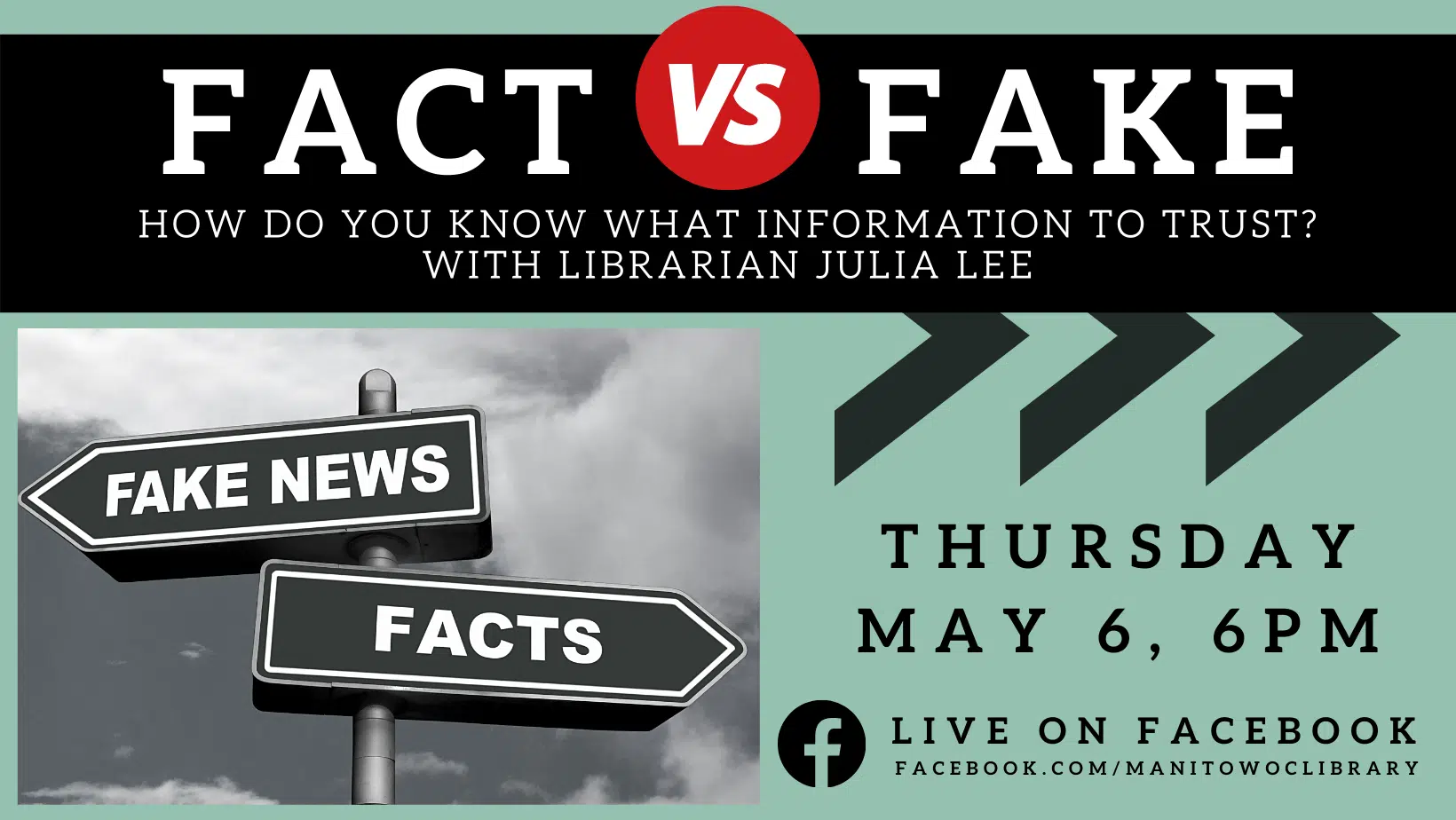The following article was submitted by Julia Lee, a Librarian at the Manitowoc Public Library.
“Fake news” is a term we have often heard over the past few years—but it’s certainly not a new phenomenon.
According to the Smithsonian Magazine, examples of fake news in America can be traced back to before the Revolutionary War. One such example would be the Boston Gazette, a newspaper published and printed by Sons of Liberty leader, Samuel Adams. Apparently, Adams was not too concerned about how factual his stories actually were. In 1765, he wrote slanderous and untrue articles about a rival named Thomas Hutchinson, saying that Hutchinson supported the hated Stamp Act. After reading Samuel Adams’ rhetoric, a mob formed and arsonists burned Hutchinson’s house to the ground—even though Thomas Hutchinson did not actually support the Stamp Act.
And while fake news isn’t new, the internet has made it far easier to spread false information faster and to a much wider audience than Samuel Adams ever could with his Boston Gazette. There you are, scrolling through your favorite social media platform and suddenly you see it: a news headline that makes you stop in your tracks. The headline makes you so angry, before you know it, you’re sharing it on your page and friends are adding outraged comments.
The internet is a powerful tool for sharing and spreading information, but it can also be a minefield of misinformation. A constant barrage of newsfeeds and posts has left us with an overabundance of information—information accompanied by very few facts. How can we even begin to sort through the rubble to find the nuggets of truth? It’s a tricky landscape to navigate—but never fear! Your friendly neighborhood librarians are here!
Here are some helpful tips from FactCheck.org on “How to Spot Fake News”:
Consider the Source. Not all sources are created equal. Click away from the story to investigate the site and its mission.
Read Beyond the Headline. News headlines are created to draw attention. Read a little further before you decide to pass along shocking information.
Check the Author. Another tell-tale sign of a fake story is often the byline (a line in a newspaper that states who wrote the article). No byline is a big red flag. If there is an author listed, Google them! Find out if they are who they say they are, and if they have a history of bias.
What’s the Support? Many times these bogus stories will cite official—or official-sounding—sources. However, once you look into it, the source doesn’t back up the claim. If an article provides links to sources (and all articles should—like this one! Make sure to click on those links!), click on them to find out what the information is really saying.
Check the Date. Some false stories aren’t completely fake, but rather distortions of real events. Old inflammatory headlines circulate on social media all the time and people do not realize the “news” they’re sharing actually took place months or sometimes years ago.
Is This Some Kind of Joke? Remember, there is such thing as satire. Normally, it’s clearly labeled as such and sometimes it’s even funny. When in doubt, investigate the site further.
Check Your Biases. This is the most difficult tip of all. If you find yourself getting emotional over a headline or article, step back and ask yourself if your own beliefs could be affecting your judgment. Slanted or biased sources often play to emotions and tell their readers what they want to hear.
Consult the Experts. Librarians are trained to help evaluate information sources and Manitowoc Public Library is here for you!
To learn more about how to evaluate information and news sources, join MPL Librarian, Julia Lee, for a virtual informational presentation aimed at helping you be a more confident media consumer. “Fact vs. Fake: How Do You Know What Information to Trust?” will take place on Thursday, May 6 at 6 PM. You can tune in on Manitowoc Public Library’s Facebook page or Youtube channel.













